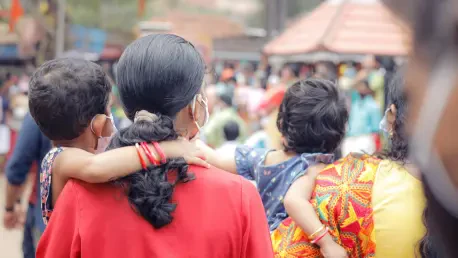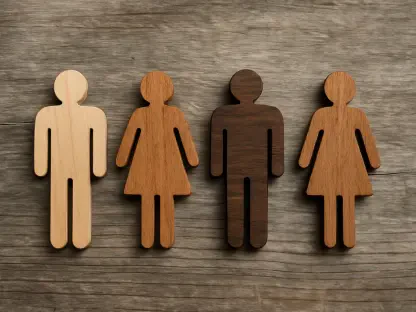In a groundbreaking move to bridge the gap between occupational safety and community well-being, a significant partnership has emerged between the Nokiiwin Tribal Council and the Workplace Safety and Insurance Board (WSIB). This collaboration, unveiled at the 19th annual general meeting in Fort William First Nation, introduces a four-year, $4 million initiative aimed at revolutionizing health and safety standards within First Nation communities. With an annual investment of $1 million, the program seeks to extend beyond traditional workplace boundaries, fostering a holistic approach that could redefine safety for families and entire communities. This ambitious effort not only addresses immediate occupational hazards but also sets a precedent for culturally sensitive, community-driven change, sparking curiosity about how such initiatives might reshape the fabric of Indigenous life.
Building a Foundation for Safety
Cultivating a Broader Vision of Health
The core of this initiative lies in reimagining health and safety through an Indigenous lens, recognizing that the workplace is just one piece of a much larger puzzle. Audrey Gilbeau, executive director of governance advisory with Nokiiwin Tribal Council, has articulated a compelling perspective: safer employees contribute to safer families, which in turn strengthen entire communities. This viewpoint challenges conventional boundaries by integrating occupational safety with broader societal well-being. It’s a vision that acknowledges the interconnectedness of personal and communal health, suggesting that improvements in one sphere can ripple outward to create lasting impact. The program aims to develop strategies that resonate with the lived experiences of community members, ensuring that safety protocols are not just imposed but embraced as part of daily life. By prioritizing this expansive approach, the partnership seeks to address systemic challenges that have long persisted, offering a model that could inspire similar efforts elsewhere.
Community-Driven Solutions for Lasting Impact
Central to the success of this partnership is the emphasis on community involvement and leadership. The initiative includes plans to hire staff and establish an advisory committee comprising representatives from all five Nokiiwin communities: Animbiigoo Zaagi’igan Anishinaabek, Biinjitiwaabik Zaaging Anishinaabek, Bingwi Neyaashi Anishinaabek, Netmizaaggamig Nishnaabeg, and Fort William First Nation. This structure ensures that programs and training are not only culturally relevant but also tailored to the specific needs of each community. Rather than adhering strictly to a legislative framework, the focus is on creating content that reflects Indigenous perspectives and values. Such an approach fosters trust and engagement, as community members see their voices and wisdom integrated into safety practices. The collaborative nature of this effort, supported by the expertise of WSIB, aims to build capacity within these communities, empowering them to sustain improvements long after the initial funding period ends.
Fostering Reconciliation Through Collaboration
Addressing Historical Gaps in Support
A critical aspect of this partnership is its commitment to reconciliation, acknowledging past shortcomings in supporting First Nation communities. Rod Cook, vice-president of workplace health and safety services at WSIB, has openly recognized that previous efforts have fallen short of making a meaningful impact in these areas. This initiative represents a deliberate step toward mending those gaps, using workplace safety as a conduit for broader trust-building and collaboration. By investing in culturally sensitive programs, the partnership aims to address the unique challenges faced by Indigenous businesses and residents, many of whom have felt overlooked by mainstream safety frameworks. The annual funding will support hiring and retaining dedicated staff, ensuring that progress is not a temporary fix but a sustainable shift. This focus on reconciliation adds a layer of depth to the program, positioning it as more than just a safety initiative but as a gesture of partnership and respect.
Integrating Expertise with Indigenous Wisdom
The synergy between WSIB’s technical expertise and the Nokiiwin communities’ cultural knowledge forms the backbone of this transformative effort. While WSIB brings best practices in occupational safety, the real strength lies in how these are adapted to fit the context of First Nation life, guided by local insights. Yolanda Wanakamik, the incoming executive director at Nokiiwin Tribal Council, has emphasized the importance of crafting programs that speak directly to Indigenous needs, ensuring relevance and accessibility. This dual approach avoids the pitfalls of one-size-fits-all solutions, instead creating a framework where safety training and policies are both practical and meaningful. Over the next four years, from the current year to 2029, the initiative will focus on developing these tailored modules, with success hinging on effective community engagement through the advisory committee. The result could be a powerful blueprint for how external expertise and local wisdom can merge to address long-standing issues.
Paving the Way for Sustainable Change
Reflecting on Collaborative Milestones
Looking back, the partnership between Nokiiwin Tribal Council and WSIB stood as a pivotal moment in the journey toward enhanced safety in First Nation communities. The dedication to weaving occupational health with broader community wellness marked a departure from traditional approaches, setting a new standard for culturally informed initiatives. The emphasis on hiring local staff and forming an advisory committee ensured that the voices of the five Nokiiwin communities were not just heard but acted upon. This collaborative spirit, combined with a substantial financial commitment, demonstrated a resolve to tackle systemic challenges head-on. The reconciliation efforts, openly acknowledged by WSIB representatives, added a profound dimension to the work, fostering trust where it had previously been scarce. Reflecting on these efforts, it became clear that the initiative was as much about healing past divides as it was about preventing future harm.
Envisioning Future Steps for Community Wellness
As the program unfolded, the next steps involved a deeper focus on measuring impact and refining strategies to ensure lasting benefits. Expanding outreach to engage more community members in safety training emerged as a priority, alongside continuous evaluation of program effectiveness. Partnerships like this could serve as a catalyst for other regions to adopt similar models, blending cultural relevance with technical know-how. Additionally, securing ongoing funding beyond the initial four-year period was seen as essential to maintain momentum and support newly trained staff. Encouraging dialogue between Indigenous leaders and safety experts could further innovate how health and safety are perceived, potentially influencing policy on a larger scale. The path forward lay in building on the trust and capacity established, ensuring that the ripple effects of safer workplaces continued to enhance family and community life across First Nation territories.









